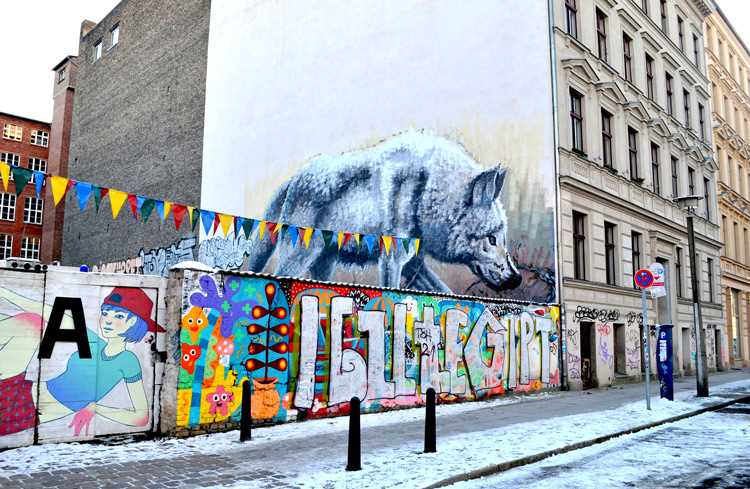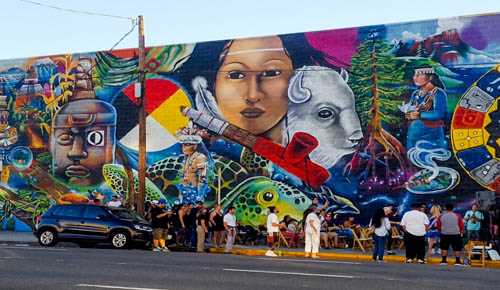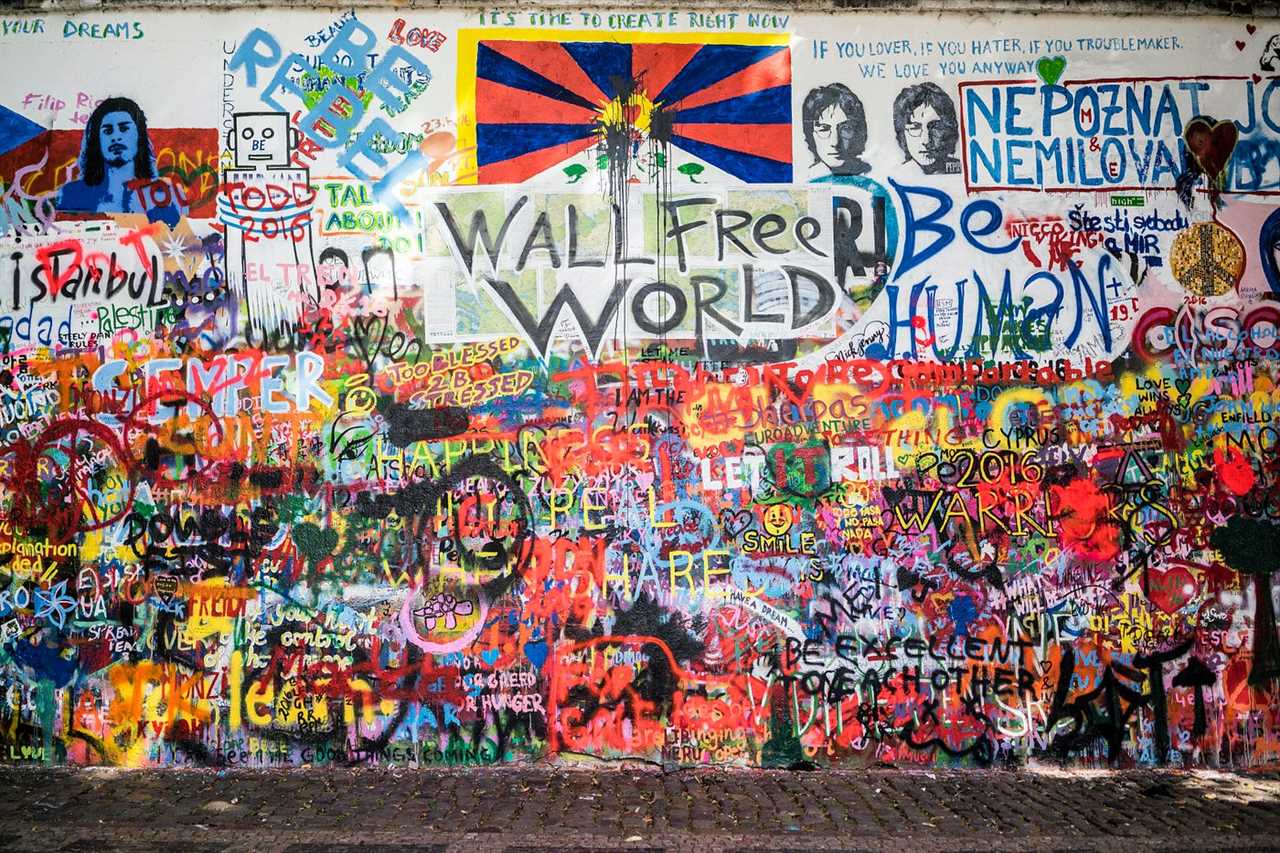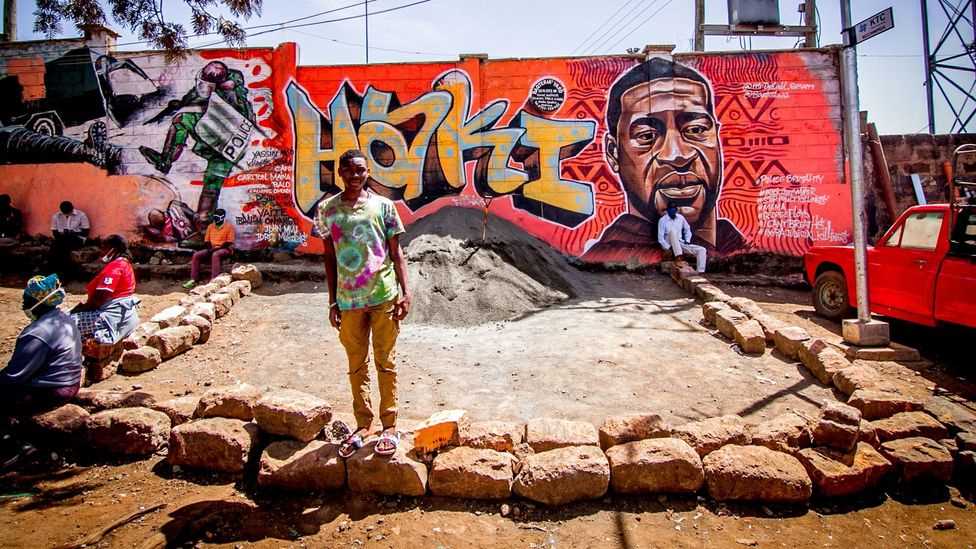In the bustling streets of cities around the world, hidden gems of artistic expression can be found. While many forms of art are celebrated and displayed in museums and galleries, street art remains a unique and captivating form of self-expression.
Wall street art, in particular, has gained significant recognition and respect from art enthusiasts and the general public alike. The vibrant and thought-provoking murals that adorn city walls communicate powerful messages, reflecting the culture and spirit of the communities in which they exist.
With its roots in the graffiti movement of the 1970s in New York City, wall street art has evolved into a multifaceted art form that transcends traditional boundaries. It has become a platform for social commentary, political expression, and personal storytelling. From colorful, larger-than-life portraits to intricate stencil art, these urban masterpieces reflect the diversity and identity of the streets they inhabit.
What sets wall street art apart is not only its accessibility but also its ability to engage and connect with a wide and diverse audience. Unlike exhibits confined to gallery spaces, street art is truly inclusive, inviting both locals and visitors to interact with the artwork on a daily basis. Whether it’s a hurried passerby or an avid art lover, these murals have the power to evoke emotions, provoke thought, and spark conversations.

Street art has a rich history that spans several decades and has evolved to encompass a wide range of styles and techniques. From its humble beginnings as illegal graffiti to its recognition as a legitimate art form, the evolution of street art mirrors the changing attitudes towards urban culture and the power of artistic expression. This section will explore the key milestones and shifts in street art, showcasing how it has transformed from an underground movement to a respected art movement.
The Roots of Graffiti

Street art can trace its roots back to the graffiti culture of the 1960s in New York City. At the time, graffiti was seen as an act of rebellion and defiance against authority. Artists would use spray paint to leave their mark on public spaces, often risking arrest or fines. This early form of street art was characterized by its bold, stylized lettering and vibrant colors, which helped to distinguish it from traditional forms of art.
The Rise of Stencil Art

One of the most influential figures in the evolution of street art is Banksy. With his distinctive stencil-based works and subversive messages, Banksy played a pivotal role in bringing street art into the mainstream art world. His elusive identity and clever social commentary have made him one of the most well-known and celebrated street artists today. Banksy’s work has not only garnered critical acclaim but has also commanded high prices at auctions, further validating street art as a legitimate and valuable art form.
The evolution of street art has also seen a shift towards more collaborative and community-focused projects. Street art festivals and events have become common, where artists from around the world come together to transform public spaces into vibrant works of art. This shift reflects a growing recognition of street art as a means of cultural expression and a way to engage with the local community.
As street art continues to evolve, it will likely face new challenges and opportunities. From political statements to personal narratives, street art has the power to provoke thought, challenge norms, and inspire change. Its evolution reflects the ever-changing landscapes of our cities and the ongoing dialogue between the artist and the public. Street art will undoubtedly continue to be a powerful form of cultural expression and a reflection of the urban environment.
In summary, street art has come a long way since its humble beginnings as illegal graffiti. From its roots in rebellion to its recognition as a legitimate art form, the evolution of street art is a testament to the power of artistic expression and its ability to shape our culture.
Section 3: Techniques and Styles

Wall Street art encompasses a wide variety of techniques and styles that are used to convey personal expressions, political messages, and cultural identities. These techniques and styles can vary greatly depending on the artist and the specific context in which the artwork is created.
One common technique used in Wall Street art is stenciling. Stenciling involves using a cut-out template to create a repeated image or pattern on a surface. This technique allows artists to quickly and efficiently create large-scale murals and graffiti pieces. Stenciling is often used to create powerful and visually striking images that can capture the attention of passersby.
Another technique frequently employed in Wall Street art is wheatpasting. Wheatpasting involves applying a mixture of wheat flour and water to paper or posters and then adhering them to walls or other surfaces. This technique allows artists to create temporary or semi-permanent installations that can be easily removed or replaced. Wheatpasting is often used to display collage-style graphics or political posters.
Graffiti, a style traditionally associated with urban street art, is also prevalent in Wall Street art. Graffiti artists use spray paint to create elaborate murals, tags, and graffiti pieces on walls, buildings, and other public spaces. This style of art often incorporates bold colors, intricate lettering, and visually complex designs. Graffiti artists often use their art to make political statements, express their identity, or simply beautify public spaces.
Stencil graffiti, a fusion of stenciling and graffiti, is another popular style found in Wall Street art. Artists create detailed stencils and use them to spray paint images or text onto surfaces. This technique allows for precise and intricate designs that can convey powerful messages. Stencil graffiti is often used to highlight social issues and provoke thought and discussion among viewers.
Street installations, such as sculpture or interactive art pieces, are also common in Wall Street art. Artists may create sculptures or installations using found objects, recycled materials, or metal structures. These art pieces are often placed in public spaces to engage viewers and challenge societal norms and expectations.
These are just a few of the many techniques and styles that Wall Street artists employ to express their culture and perspectives. Each artist brings their own unique approach and vision to their work, resulting in a diverse and dynamic art form that continues to evolve and inspire.
Section 4: The Culture of Street Art
The culture surrounding street art is a unique and vibrant ecosystem that has evolved over time. It is a form of artistic expression that goes beyond the traditional art gallery setting, reaching a wide and diverse audience. Street art is often characterized by its connection to the local community and it carries a strong sense of sociopolitical commentary.
One of the defining features of street art culture is the element of surprise. Street artists often work in secret, creating their masterpieces under the cover of darkness. This adds an air of mystery and excitement to the creation and discovery of street art. People stumble upon these artworks unexpectedly, transforming an ordinary walk down the street into a memorable experience.
Street art also has a close relationship with graffiti, another form of urban artistic expression. Graffiti artists have played a significant role in shaping the culture of street art. They have helped to break down barriers and redefine what is considered “art.” Street art and graffiti share a common goal of reclaiming public spaces and challenging societal norms.
Additionally, the culture of street art is marked by collaboration and community engagement. Artists often collaborate with one another to create stunning murals and large-scale installations. They also involve the local community by seeking their input or using buildings and walls owned by local businesses or organizations as their canvas. This fosters a sense of ownership and pride within the community.
Furthermore, the culture of street art is highly influenced by the ever-changing urban landscape. Artists adapt their work to the surrounding environment, using the texture, color, and existing structures as elements of their art. They pay attention to the history and character of the neighborhood, creating pieces that reflect and respect the local culture.
Section 5: The Impact of Street Art
Street art has had a significant impact on communities and urban environments around the world. It gives a voice to marginalized groups and provides a platform for expression, allowing artists to communicate their perspectives and ignite conversations about important social and political issues.
One of the major impacts of street art is its ability to transform public spaces. Dull and uninteresting walls become vibrant and captivating, breathing life into the surrounding neighborhood. By turning blank canvases into works of art, street artists inject color, creativity, and imagination into the urban landscape.
Street art also plays a crucial role in fostering a sense of identity and belonging within communities. It reflects the culture and spirit of the people who live there, serving as a visual representation of their values, beliefs, and shared experiences. Murals and graffiti can serve as historical documentation, capturing significant moments in a community’s history and preserving them for future generations.
Furthermore, street art has the power to challenge the status quo and question societal norms. Artists often use their work to critique authority, raise awareness about injustice, and stimulate public dialogue about pressing issues. The visibility of street art creates a platform for alternative voices that may otherwise be ignored or marginalized. It can prompt viewers to reevaluate their own beliefs and consider new perspectives.
Another impact of street art is its contribution to the economy and tourism of a city. Cities like Berlin, London, and New York have seen a rise in street art tourism, with visitors flocking to witness the impressive murals and graffiti that adorn the streets. This influx of tourists can boost local businesses and create employment opportunities for artists, contributing to the economic growth of the community.
| Key Impacts of Street Art |
|---|
| 1. Transformation of public spaces |
| 2. Fostering a sense of identity and belonging |
| 3. Challenging the status quo |
| 4. Contribution to the economy and tourism |
Section 6: Appreciating Street Art
Appreciating street art is a way to immerse oneself in the vibrancy and creativity of the urban landscape. It allows individuals to engage with art in unconventional spaces, contributing to the democratization of art itself.
One of the main aspects of appreciating street art is understanding the context in which it exists. Street art often reflects the culture, history, and social issues of the community it emerges from. By taking the time to learn about the local context and the artists behind the work, one can gain a deeper appreciation for the messages and symbolism embedded in the art.
Furthermore, appreciating street art involves actively seeking out and exploring different neighborhoods and cities known for their vibrant street art scenes. It requires venturing off the beaten path, discovering hidden gems, and stumbling upon unexpected works of art. Whether it’s through guided street art tours or independent exploration, immersing oneself in the streets can uncover a rich tapestry of artistic expression.
Lastly, appreciating street art means embracing the impermanence of the medium. Street art exists in the public realm and is subject to the elements, vandalism, and city policies. Some pieces may be temporary, only existing for a few weeks or months before being painted over or removed. The transient nature of street art adds to its allure and makes each encounter with a piece even more special.

I am a mural enthusiast and a fervent admirer of street art. Rather than creating murals myself, I am passionate about collecting them. My love for street art knows no bounds. I am dedicated to curating and cherishing these artworks that grace the streets. My collection stands as a testament to my profound appreciation for this form of artistic expression.
read about me




